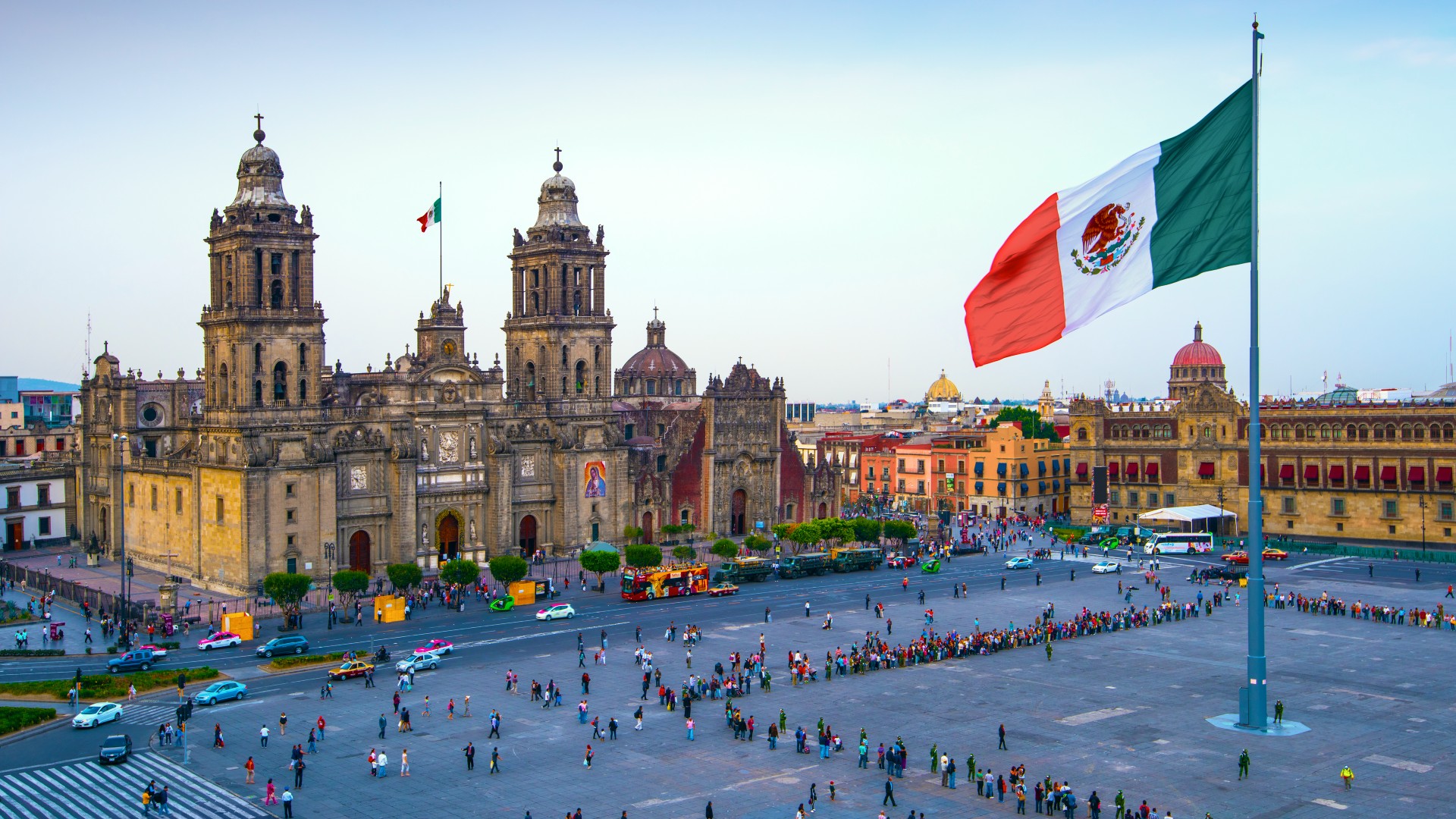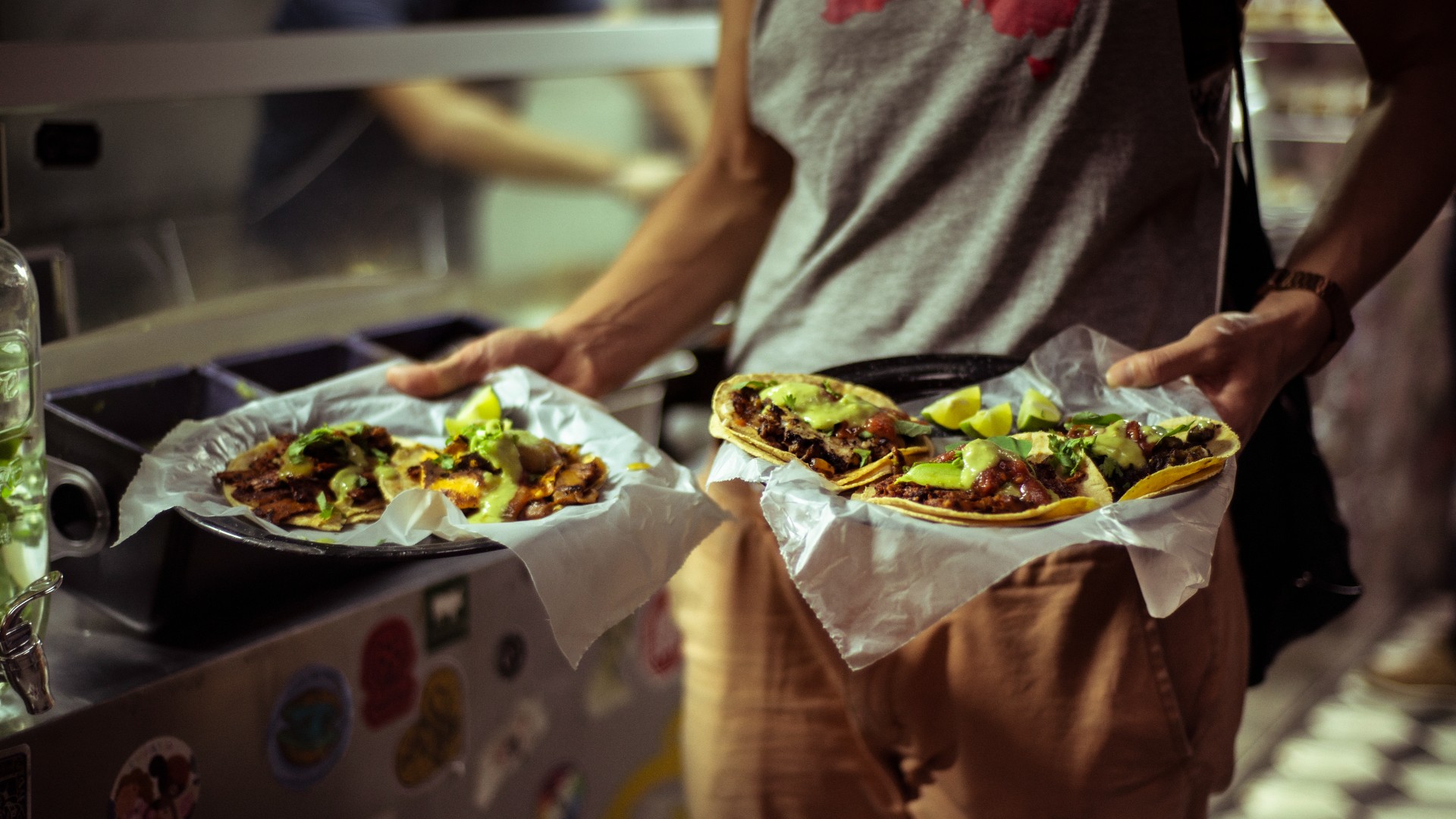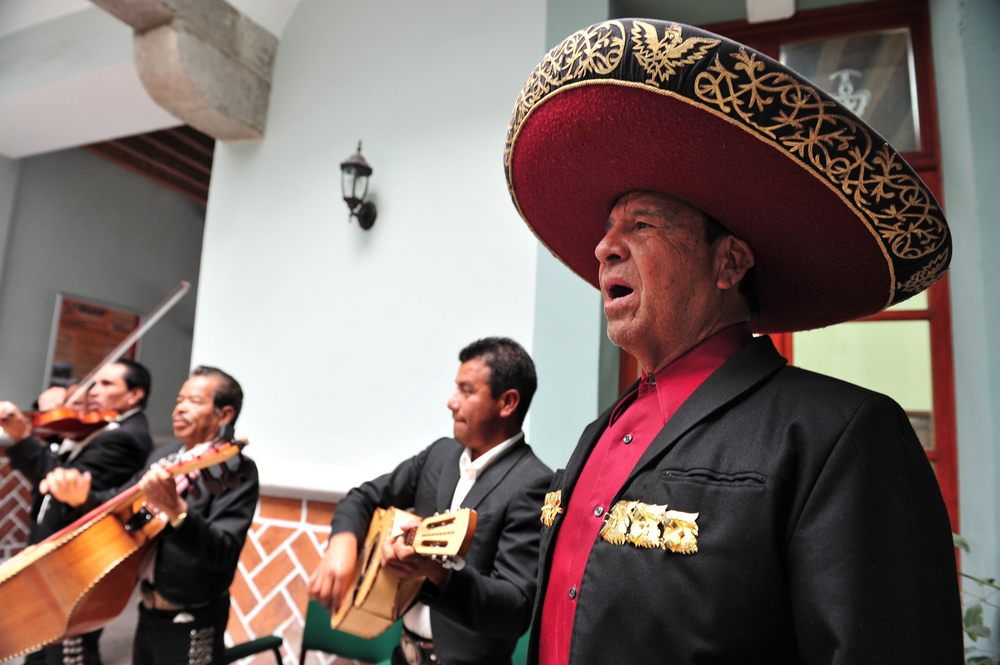Mexican culture: Customs and traditions
Mexican culture brings together elements of ancient Central-American heritage and European customs.
Mexican culture has undergone a tremendous transformation in its recent history with varying impacts in different regions. Many Mexicans live in cities, but smaller rural communities still play a strong role in defining the country's collective vibrant community.
Mexico can trace some of its cultural heritage back to the Aztec and Maya peoples who once controlled much of Central America, but equally it owes a great deal to the colonial heritage from Spain. Many of the customs in Mexico can be traced back through one of these branches of history.
"Mexico's characteristics set it apart from other Spanish American nations. No other country among them has so actively traced its cultural origins [through] so dramatic a history to such deep roots; none has so thoroughly fused European and non-European cultural influences," wrote Peter Standish and Steven M. Bell in "Culture and customs of Mexico" (Greenwood, 2004).
Population of Mexico
Mexico is the 10th most populous country in the world, with over 128 million people according to the United States Census Bureau estimate published on July 1, 2021 . According to the Index Mundi, Mexico consists of several ethnic groups. The mestizo (meaning people of mixed indigenous Central American heritage and European heritage) group accounts for 62% of the population. Indigenous Central American or predominantly indigenous Central American people account for 21%, while 10% of the population has a mostly European background. These groups create a culture that is unique to Mexico. However Index Mundi notes that Mexico does not collect census data on ethnicity.
According to the Mexican National Institute of Statistics, Geography and Informatics (INEGI) the median age of the population is 29 years old, which is a jump up from 2015 when it was 27. Index Mundi adds that 26% of the population is under 14-years-old, just under 17% is 15 to 24, 41% is 25 to 54, a little over 8% is 55 to 64 and nearly 8% are 65 or older.
It's estimated that 81% of the total population of Mexico lives in urban areas with Mexico City alone having a population of nearly 22 million in the wider area, according to Index Mundi, making it the fifth most populous city in the world.

Languages of Mexico
The overwhelming majority of Mexicans today speak Spanish. According to the CIA, Spanish is spoken by 93.8% of the Mexican population. About 5.4% of the population speaks Spanish as well as indigenous languages, such as Mayan, Nahuatl and other regional languages. Indigenous Mexican words have also become common in other languages, including English. For example, chocolate, coyote, tomato and avocado all originated in Nahuatl.
Religions of Mexico
"Much of Mexican culture revolves around religious values and the church, as well as the concept of family and inclusiveness," said Talia Wagner, a marriage and family therapist in Los Angeles. Around 78% of Mexicans identify themselves as Catholic, according to the CIA, although many have incorporated pre-Hispanic Mayan elements as part of their faith. Some of this dates back to the first colonists looking to merge the approaches of Europe and Central America to bring Christianity to the region.
"Public ritual had always been essential to both pre-Columbian religion and Spanish Catholicism. Consequently, priests quickly introduced their aboriginal parishioners to religious plays, music, and festivals, especially at Easter and Corpus Christi, both of which celebrated the Holy Eucharist," wrote Linda A Curcio-Nagy, professor of history at the University of Nevada in "The Oxford History of Mexico" (Oxford University Press, 2010), edited by Michael C. Meyer and William H. Beezley.
Other Christian denominations represented in Mexico include Presbyterians, Jehovah's Witnesses, Seventh-Day Adventists, Mormons, Lutherans, Methodists, Baptists and Anglicans. There are also small communities of Muslims, Jews and Buddhists.
Values of the Mexican people
Especially outside of cities, families are typically large and Mexicans are very conscious of their responsibilities to immediate family members and extended family such as cousins and even close friends. Hosting parties at their homes plays a large part of Mexican life and making visitors feel comfortable is a large part of the values and customs of the country.
"Family units are usually large, with traditional gender roles and extensive family involvement from the external members who assist one another in day to day life," Wagner told Live Science. There is a strong connection among family members. "Parents are treated with a high degree of respect, as is the family in general and there may be constant struggle, especially for the growing children between individual wants and needs and those wants and needs of the family," added Wagner.
One large event in a Mexican family is the quinceañera. This is a celebration of a young lady's 15th birthday. It signifies the girl's journey from childhood to womanhood. The party includes an elaborate dress for the girl of honor, food, dancing, friends and families. Before the party there is often a mass at the girl's church. The girl is accompanied throughout the festivities by her damas (maids of honor) and chambelánes (chamberlains), according to Encyclopedia Britannica.

Mexican food
Mexican cuisine varies widely between regions, as each town has its own culinary traditions, according to "Mexico For You," a publication of the Mexican Cultural Institute of Washington, D.C. Tortillas and other food made from corn are common everywhere, though, as are pepper, tomatoes and beans. Rice is also a staple, according to History.com.
Many foods that originated in Mexico are popular worldwide, including avocados, chocolate and pumpkins, in fact Mexican food is one of the country's most popular cultural exports. "Salsa now outsells catsup in the United States and $5 billion worth of tortillas are sold internationally each year," wrote Robert Buffington, Suzanne B. Pasztor, and Don M. Coerver in "Mexico: An Encyclopedia of Contemporary Culture and History" (ABC-CLIO, 2004)
Mexico is known for its tequila, which is made from agave cactus that is well suited to the climate of central Mexico. Soda is a very popular drink in Mexico, as the country has a well-developed beverage industry.
Mexican arts
Clay pottery, embroidered cotton garments, wool shawls and outer garments with angular designs, colorful baskets and rugs are some of the common items associated with Mexican folk art. Millennia-old traditions continue in silver-smithing, mosaics, textiles, pottery and basket-weaving, according to "Mexico For You."
The country is closely associated with the Mariachi style of folk music. Originated in the southern part of the state of Jalisco sometime in the 19th century, it involves a group of musicians — playing violins, guitars, basses, vihuelas (a five-string guitar) and trumpets — and wearing silver-studded charro suits and elaborate hats. "La Cucaracha" is a well-known Mariachi staple.
Two of Mexico's most famous artists are Frida Kahlo and Diego Rivera. Their paintings include vibrant colors and depictions of life in Mexico. Rivera was a pioneer of Muralism, a movement that used expansive wall art to educate the people. Kahlo's work drew from personal pain and also the deep history of Mexico itself. "The work of Frida Kahlo (1907–54) is also steeped in Mexicanness, although it is primarily a record of her difficult life, marked in pain, disappointment, and loneliness," wrote Helen Delpar, a professor of history at the University of Alabama in "The Oxford History of Mexico" (Oxford University Press, 2010).

Mexican fashion
Many may not think of Mexico as a place that fosters high fashion, but many fashion designers hail from Mexico, such as Jorge Duque and Julia y Renata. There is also a Mexico Fashion Week. In the cities, fashion in Mexico is influenced by international trends, so the typical urban Mexican dresses similar to people in Europe and the United States.
Traditional Mexican clothing for women includes a sleeveless tunic-like dress called a huipil, according to Don Quijote Spanish School. Originally, these cotton dresses were made very simple with garnishes of color. However, traditional Mexican women's clothing now regularly includes lots of ornate embroidery, often including images and patterns that have symbolic meaning attached to them.
One distinguishing article of traditional men's clothing is a large blanket cape called a sarape. Boots are also a wardrobe staple. The charro suit, with its origins as the outfit worn by Mexican cowboys, is most associated with Mariachi musicians. The suit is also an acceptable substitute for a tuxedo at formal events in Mexico. The charro suit includes the sombrero, a wide-brimmed hat that provides plenty of shade.
Doing business in Mexico
Mexico's currency is the peso. Almost 65% of the country's GDP comes from the service sector with industry making up 31% and agriculture contributing 3.6%, according to the CIA. Its primary agricultural products are sugar cane, maize, milk, oranges, sorghum, tomatoes, poultry, wheat, green chillies/peppers and eggs.
Mexican business culture tends to value personal relationships, a strong hierarchy and a clear consciousness of status, according to Santander. "Doing business of any sort is normally preceded by a period of socializing," wrote Peter Standish and Steven M. Bell in "Culture and customs of Mexico."

Mexican holidays and celebrations
The Feast of Our Lady of Guadalupe, which is celebrated on Dec. 12, is a major Mexican holiday celebrating the appearance of the Virgin Mary to an indigenous Mexican in the first years of Spanish rule. She is the patron saint of the country. This is followed closely by Posadas, a nine-day celebration in which people re-enact Mary and Joseph's journey to Bethlehem to search for a place to stay. Families go from door to door carrying candles and singing, asking for shelter until the owners open the door, at which point the party begins.
The Day of the Dead (Día de los Muertos), celebrated on Nov. 2, is a day set aside to remember and honor those who have died, according to the University of New Mexico. Carnival is also celebrated in many communities throughout Mexico to mark the period before Lent.
Independence Day, marking the country's separation from Spain in 1810, is celebrated on Sept. 16. Cinco de Mayo, which marks a Mexican military victory over the French in 1862, is more widely celebrated in the United States (as a beer promotion) than it is in Mexico.
Additional resources and reading
Learn more about the colonial history of Mexico and Central America more widely by reading about one of the men who helped to shape events, Hernán Cortés.
If the culture and life of Central America before the arrival of European colonists is what interests you, then a deep dive into the Aztec capital of Tenochtitlán is for you.
Bibliography
- "Culture and customs of Mexico" by Peter Standish and Steven M. Bell (Greenwood, 2004)
- "The Oxford History of Mexico" edited by Michael C. Meyer and William H. Beezley (Oxford University Press, 2010)
- "Mexico: An Encyclopedia of Contemporary Culture and History" by Robert Buffington, Suzanne B. Pasztor, and Don M. Coerver (ABC-CLIO, 2004)
- Mercedes Benz Fashion Week
- "Mexico Business Practices" Santander Trade Markets
- "Our Lady of Guadalupe" Catholic Online
- " The History of Mexican Independence" Mexonline
Sign up for the Live Science daily newsletter now
Get the world’s most fascinating discoveries delivered straight to your inbox.
Kim Ann Zimmermann is a contributor to Live Science and sister site Space.com, writing mainly evergreen reference articles that provide background on myriad scientific topics, from astronauts to climate, and from culture to medicine. Her work can also be found in Business News Daily and KM World. She holds a bachelor’s degree in communications from Glassboro State College (now known as Rowan University) in New Jersey.
- Alina BradfordLive Science Contributor
